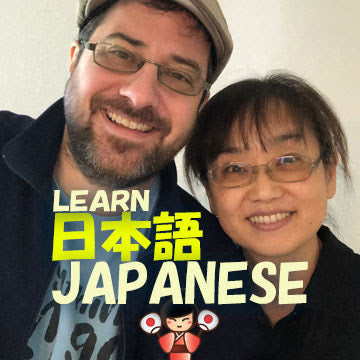
Kanji in Context Workbook 2 (Revised Edition)
€26,95
Kanji in Context targets learners who have completed a beginning course and builds on that foundation of kanji and vocabulary. Upon completion, the student will have an understanding of all 2,136 kanji designated for common use by the Japanese Ministry of Education.
This series has a main textbook and two volumes of workbooks. This is the second workbook. You will need the Kanji in Context textbook to use this workbook.
Kanji in Context was written with the needs of intermediate and advanced learners of Japanese in mind, and the content is presented in a manner that facilitates progress in stages, enabling learners to understand all the everyday use kanji.
132 pages
Includes detachable answer key
Covers kanji 1201-2136 and the vocabulary found in the main textbook
![Tobira Power up your Kanji [UPPER BEGINNERS - INTERMEDIATES]](http://www.thejapanshop.com/cdn/shop/products/tkanji_375x.jpg?v=1675272897)
Tobira Power up your Kanji [UPPER BEGINNERS - INTERMEDIATES]
€30,95
Tobira is designed for students who have completed a basic textbook series but need help solidifying the grammar, vocabulary, and kanji they have learned.
This book covers 800 of the most important kanji. It reviews the 200-300 kanji a basic level textbook should teach and adds to that.
The main textbook can be found here: Tobira Textbook.
236 Pages
Published by Kurosio

Kanji de Manga Volume 6: The Comic Book That Teaches You How to Read And Write Japanese!
€9,95
Paperback. 144 pages. 7 x 5 inches.
-----------------
Another 80 kanji are featured in the sixth volume of Manga University's award-winning series. Upon completion of this and the previous five volumes, students will have learned a total of 480 kanji, enough to prepare them for the advanced levels of the official Japanese Language Proficiency Test.
"A brilliant idea!" says Ronald A. Morse, retired professor of Japan Studies at UCLA and the University of Las Vegas, Nevada. "Japanese kanji — the written symbols adapted from Chinese — were originally drawings of images from real life. Japanese comic books and cartoons now provide fresh images to help us learn. Kanji de Manga uses today's manga images to make the kanji learning process fun and easy for otaku of all ages. This is a brilliant approach to learning the language."
Each page features its own comic strip, kanji pronunciation guide, stroke order, and English explanations.
Created by Glenn Kardy, editor of several volumes in the popular How to Draw Manga series, including Getting Started, the first book of its kind to be used at major universities in the United States (UCLA) and Japan (Waseda). Artwork by Chihiro Hattori, niece of legendary manga artist Eichi Fukui.

Kanji De Manga Volume 5: The Comic Book That Teaches You How To Read And Write Japanese!
€9,95
Paperback. 144 pages. 7 x 5 inches.
-----------------
Another 80 kanji are featured in the fifth volume of Manga University's award-winning series. Upon completion of this and the previous four volumes, students will have learned a total of 400 kanji, enough to prepare them for the advanced levels of the official Japanese Language Proficiency Test.
"A brilliant idea!" says Ronald A. Morse, retired professor of Japan Studies at UCLA and the University of Las Vegas, Nevada. "Japanese kanji — the written symbols adapted from Chinese — were originally drawings of images from real life. Japanese comic books and cartoons now provide fresh images to help us learn. Kanji de Manga uses today's manga images to make the kanji learning process fun and easy for otaku of all ages. This is a brilliant approach to learning the language."
Each page features its own comic strip, kanji pronunciation guide, stroke order, and English explanations.
Created by Glenn Kardy, editor of several volumes in the popular How to Draw Manga series, including Getting Started, the first book of its kind to be used at major universities in the United States (UCLA) and Japan (Waseda). Artwork by Chihiro Hattori, niece of legendary manga artist Eichi Fukui.

Kanji De Manga Volume 4: The Comic Book That Teaches You How To Read And Write Japanese! (v. 4)
€9,95
Paperback. 144 pages. 7 x 5 inches.
-----------------
Our award-winning series moves forward with an all-new selection of 80 kanji geared toward intermediate learners of the language. Upon completion of this and the previous three volumes, students will have learned a total of 320 kanji, enough to prepare them for the advanced levels of the official Japanese Language Proficiency Test.
"A brilliant idea!" says Ronald A. Morse, retired professor of Japan Studies at UCLA and the University of Las Vegas, Nevada. "Japanese kanji — the written symbols adapted from Chinese — were originally drawings of images from real life. Japanese comic books and cartoons now provide fresh images to help us learn. Kanji de Manga uses today's manga images to make the kanji learning process fun and easy for otaku of all ages. This is a brilliant approach to learning the language."
Each page features its own comic strip, kanji pronunciation guide, stroke order, and English explanations.
Created by Glenn Kardy, editor of several volumes in the popular How to Draw Manga series, including Getting Started, the first book of its kind to be used at major universities in the United States (UCLA) and Japan (Waseda). Artwork by Chihiro Hattori, niece of legendary manga artist Eichi Fukui.

Katakana, the Basics of Japanese [Paperback]
€9,95
Learn katakana fast and painlessly.For English speakers wanting to start learning Japanese.If you want to learn Japanese, mastering hiragana and katakana should be one of the first things you do. Many textbooks begin assuming the student knows the kana. This book is designed to help you master katakana quickly.With this book, you will learn all the main katakana characters plus all the variations. You will also learn important vocabulary words using the katakana that you have learned.In addition to the PDF of the book, it also includes all the MP3s of the sounds (so you can be sure you are pronouncing the characters correctly), a poster you can print, a PDF of flashcards you can print and cut, and a PDF of our 14 page writing practice pad for mastering Katakana.Argiatou and here's to your Japanese!

Kanji Handbook for the Japanese Language Proficiency Test (Revised Edition)
€26,95
This comprehensive and easy to use book includes all the kanji found in all levels of the Japanese Language Proficiency Test.
Search by pronunciation to find out the kanji's JLPT level, readings, meaning (in English, Chinese, and Korean), and several jukugo examples.

Kana de Manga
€9,95
Paperback. 144 pages. 7 x 5 inches.
-------------------
Great for beginners!
American pop culture is turning Japanese. Every day, millions of kids spend hours watching translated anime on Cartoon Network and reading telephone book-sized comics called manga. From Spirited Away to Shonen Jump, if the label says "Made in Japan," it's cool.
But what if you want to enjoy anime and manga in its original language? Written Japanese consists of three scripts: the phonetic hiragana and katakana syllabaries, each comprised of 46 characters (collectively known as kana); and kanji, a complex set of characters based on Chinese ideographs. Hiragana and katakana are the true "ABCs of Japanese," as they can be used to write complete sentences. Children in Japan learn to read and write hiragana and katakana long before they are introduced to kanji. Most manga targeted toward the youngest readers in Japan are also written completely in kana.
Kana de Manga makes learning hiragana and katakana easy and fun for students who already enjoy Japanese comics. Each page has a humorous manga illustration representing a word that begins with the hiragana or katakana character featured prominently at the top. A brief explanation accompanies each drawing; the English equivalent of the word is given, and there is a work area where students can practice writing the characters.
Written by Glenn Kardy, editor of several volumes in the popular How to Draw Manga series, including Getting Started, the first book of its kind to be used at major universities in the United States (UCLA) and Japan (Waseda). Artwork by Chihiro Hattori. Features a foreword by Ronald A. Morse, retired professor of Japan Studies at UCLA and the University of Nevada, Las Vegas.


